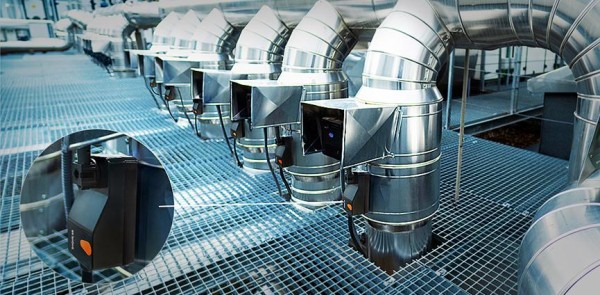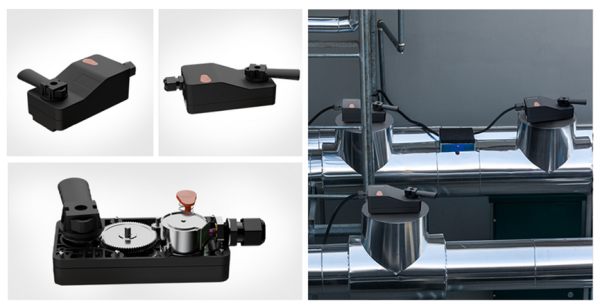The United Nations Environment Programme (UNEP) released a report at the 27th United Nations Climate Change Conference indicating that the energy consumption caused by the global construction industry has already accounted for more than 34% of global energy demand in 2021, with energy-related carbon emissions reaching a record high of 10 billion tones, 2% above the peak before the outbreak of Covid-19. Among them, the energy demand for HVAC (Heating, Ventilation, and Air Conditioning), which accounts for 40-60% of a building's total energy consumption has also risen by around 3% and 4% respectively compared to 2019 and 2020. All these growing figures show that the construction industry is moving further and further away from its goal of decarbonizing by 2050. The Executive Director of UNEP, Inger Andersen, stressed that "promoting energy security in the short and long term requires immediate measures, increased investment and policy formulation for the construction sector."
HVAC plays a vital role in temperature control in buildings, but as a large energy consuming system, it would produce a large amount of carbon footprint when providing heating and cooling service for the buildings. According to the statistics, the comprehensive terminal energy consumption of residential and commercial construction sectors in US is estimated to be around 21 trillion British thermal units (Btu) in 2021, which is equivalent to around 28% of the total terminal energy consumption in US in 2021. And today, things are moving in a positive direction. At present, almost 73 countries have successively promulgated a series of building energy-saving regulations, requiring strict energy conservation in residential, industrial and new building construction. In response to the requirements of relevant regulations, HVAC manufacturers are also actively finding out solutions that can optimize HVAC systems and reduce building energy consumption without affecting comfort and indoor air quality.
Due to the complexity, diversity and uncertainty of HVAC systems in different buildings, traditional management methods make it difficult to collect data at each stage, which hinders operation and maintenance, resulting in excessive energy consumption and unreasonable energy-saving measures. An effective solution at present is to combine HVAC systems with artificial intelligence, IoT, expertise and experience. By working with professional teams, installing IoT sensors inside and outside the building to collect data such as the number of indoor person and weather conditions and sending those data to the digital management platform in real time so as to realize automated management of adjustment equipment such as the air damper actuator and provide intelligent, efficient and responsive environmental control.
In addition, due to the long maintenance period of buildings, the equipment that is not timely maintained can also lead to excessive energy consumption. The air damper actuator, which is specially designed for HVAC systems to control and regulate indoor temperature and humidity, is widely used in the global building industry because of their easy operation and maintenance structure, low energy consumption and safety in operation. It is reported that ZHAOWEI, who owns years of R&D and manufacturing experience in the field of micro drives, has responded to the call of the national energy saving and emission reduction policy and has cooperated with many actuator manufacturers to provide customizable air damper actuators for the HVAC systems in different buildings to help achieve energy conservation in buildings.

In building applications, the air damper actuator which has the function of controlling the flow of gas in the pipe and the function of regulating the flow speed of gas in the pipe is important. Compared with similar products on the market, ZHAOWEI air damper actuator drive system that adopts an integrated design is smaller in volume, more convenient in installation, more simple in structure and of high reliability and large load capacity. The gearbox of the control valve drive system adopts a plastic housing to reduce its weight and powder metallurgical gears inside to ensure its stability and stepper motors as drive motor to reduce noise. Besides, this air damper actuator whose working range is 90° has a certain self-locking force and can meet the requirements of manual clutch, which can empower many building scenarios.

With the acceleration of global urbanization and frequent occurrence of extreme weather, buildings are consuming more energy for heating and cooling, leading to rising carbon emissions and energy consumption. Fortunately, governments attach great importance to building energy conservation and actively urge the building industry to reduce carbon footprints and improve energy efficiency. Enterprises from all over the world are also responding to government policy and actively exploring ways to save energy and reduce emissions. It is believed that with the joint efforts of the government and enterprises, the future building industry will develop in the direction of energy conservation.
Media Contact
Company Name: Shenzhen Zhaowei Machinery & Electronics Co. Ltd.
Email: Send Email
City: Shenzhen
Country: China
Website: https://www.zwgearbox.com/industrial-equipment-drive/drive-systems-for-air-damper-actuator






